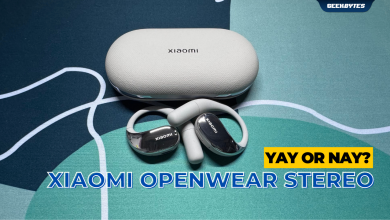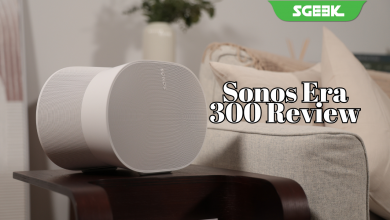
With people staying indoors and not venturing out to take photos due to the Covid-19 pandemic, the beleaguered camera industry is taking a big hit.
However, last year, Sony launched ZV-1 – a prosumer fixed-lens camera designed for content creators, who can still create content at home. This year, Sony has launched an interchangeable-lens camera (ILC) designed for the same purpose with the Alpha ZV-E10.

The ZV-E10 is essentially a ZV-1 upgraded with an E-mount for you to change lenses. It also comes with Sony’s 24.2-megapixel APS-C Exmor CMOS image sensor and Bionz Z image processor for high-quality imageries.
SPECS
PRICE: $799 (body only), $999 (body with 16-50mm f/3.5-5.6 power zoom lens); available next month on Sony Store
IMAGE SENSOR: 24.2-megapixel APS-C Exmor CMOS
DISPLAY: 3-inch vari-angle touchscreen LCD with 1,440,000 dots
SENSITIVITY: ISO 50 to 32,000
SHOOTING SPEED: Up to 11 frames per second
CONNECTIVITY: Bluetooth, Wi-Fi, NFC
WEIGHT: 343g (body with battery and memory card)
In addition, the ZV-E10 incorporates two important video blogging (vlogging) features found in the ZV-1 to cater to the needs of content creators.
One is the Background Defocus, or bokeh, function that lets you switch between a blurred and sharp background. The other feature is the Product Showcase Setting that allows the camera to automatically shift focus from your face to a highlighted object.
For this review, we used the 16-50mm f/3.5-5.6 power zoom lens with a white ZV-E10. It is also available in black.
DESIGN
In terms of design, the ZV-E10 is a mix of ZV-1’s shell and the button layout of a6100 mirrorless camera. The ZV-E10 also has a nice grip with the shutter release button and zoom lever on its top.
It is the first Sony consumer ILC to feature a zoom lever since a5100 in 2014. Behind the shutter release button, you can find a large video-recording button and a dedicated Background Defocus mode button.

The ZV-E10 lacks the top Mode dial found in the a6000 series. In its place is a single button that allows you to toggle between still mode, video mode and S&Q (or high-speed video) mode.
FOR
+ Well-thought button layout
+ Nice handling
+ Quick autofocusing performance
+ Great image quality
AGAINST
– No electronic viewfinder
– No in-body image stabiliser
Beside this button is the top command dial. There is also a rear control dial sited near the thumb rest. This rear control dial doubles up as shortcuts to settings from display, ISO, exposure compensation and shooting drive.
On top of rear dial is the Function button that gives you quick access to the, well, the quick-access Function menu. Below the rear control dial is the play button and the a trash button which doubles as the Product Showcase mode button as well.

Overall, the thoughtful button layout and nice grip offers great handling of the camera.
However, the ZV-E10 does not come with an electronic viewfinder (EVF). For those who love to shoot stills, an EVF will be sorely missed. But it has a 3-inch vari-angle LCD monitor that you can flip out and turn 270 degrees for selfie or other creative shots. I guess this is more important for content creators.
Another nice touch is the tiny red light in front of the camera that lights up when recording starts, akin to studio video cameras.
On the left side of the ZV-E10, there is 3.5mm microphone jack beneath a small door. There is a bigger door below that protects a USB-C port (for charging and connection to a PC), a micro-HDMI port, and a 3.5mm headphone port. Basically, everything a content creator needs.

PERFORMANCE
The ZV-E10 takes around 1.5 seconds for both start-up and shutdown. This is a tad quicker than the two-second start-up and shutdown times of most mirrorless cameras.
Using an SD card with a writing speed rated at 48MB per second, the ZV-E10 took 24 RAW images in 2.4 seconds before the buffer ran out. So, it is closed to its advertised shooting speed.
During this review, Sony’s GP-VPT2BT shooting grip (S$165) was used when shooting videos. This grip doubles as a selfie stick or tripod, while giving you convenient access to the video-recording/photo-taking buttons and zoom control. This shooting grip is probably a must-have for content creators.

I find the camera’s AF locking onto my face and eyes almost instantaneously, even when I am moving about in the frame.
The Product Showcase feature works as advertised. I hold up a watch during a test video and the camera automatically focuses on it while I am talking.
And when I put the watch down, the camera quickly shifts the focus to me. This is definitely handy for content creators who need to showcase products.
Not to mention, the Background Defocus feature also works well too. This is especially great if you find your background to be too cluttered.

The still image quality is superb with good dynamic range. Pictures look sharp and vivid with great amount of details, even in the darker areas.

Noise performance is excellent as well. I saw very little noise artefacts even at ISO 3,200. At ISO 6,400, noise artefacts were evident, but there was little detail loss and only slight blurring. Only at ISO 12,800 and above did the detail loss become really evident.
The 4K videos shot with this camera are of excellent quality, with great detail and sharpness. The built-in microphone does a superb job in capturing my voice with very little wind noise, thanks to the dead-cat microphone cover.
On the other hand, the full high-definition videos recorded lack the details and sharpness you see in the 4K videos. My advice is to stick to 4K. In addition, without an in-built image stabiliser, the videos recorded while walking are visibly shaky.
BATTERY LIFE
The camera’s battery life is rated at 80 minutes of video recording or 440 still images. In my tests, I recorded only around 30 minutes of 4K video before the battery level drop to 60 per cent.
While you can buy an extra battery, the easier thing to do is probably use a portable power bank to charge this camera via its USB-C port.
VERDICT
For anyone who does a lot of static video content and yet wants the flexibility of swapping lenses, getting the Sony Alpha ZV-E10 is pretty much a no-brainer. This is especially so given the reasonable pricing of the camera starting from S$799 and S$999 with a kit lens. By comparison, the ZV-1 costs S$999 already.
RATINGS
FEATURES: 8/10
DESIGN: 8/10
PERFORMANCE: 8.5/10
BATTERY LIFE: 7.5/10
VALUE FOR MONEY: 9/10
OVERALL: 8.5/10






